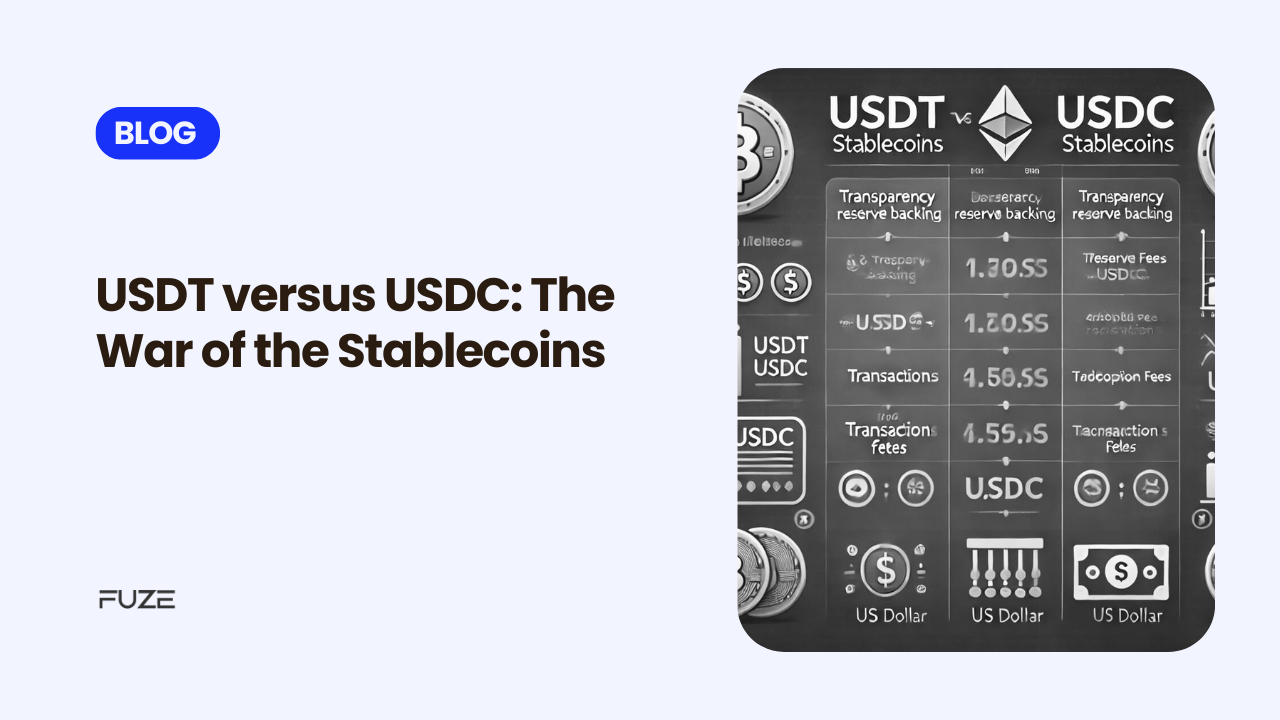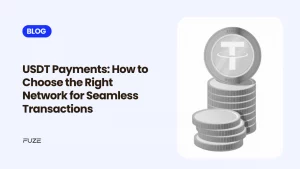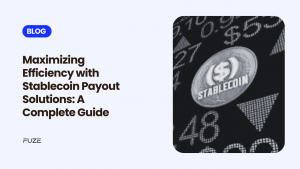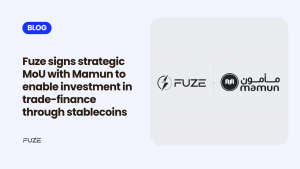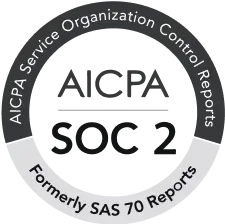If you use cryptocurrency, or have been around people who use cryptocurrency, you would have heard two terms being used very often: USDC and USDT.
USDC and USDT are two of the most popular stablecoins in the cryptocurrency market. They are designed to maintain a stable value of $1, pegged to the US dollar.
But why are they so important to the crypto universe? What are stablecoins? How is the $1 value determined? We’re sure you have questions, so let’s dive deep without much ado.
But first, the basics on stablecoins…
Stablecoins are a unique breed of cryptocurrency designed to minimize price fluctuations. Unlike traditional cryptocurrencies, which can experience wild swings in value, stablecoins are pegged to a more stable asset, typically a fiat currency like the US dollar or a “hard” commodity like gold.
Note: Pegging in crypto refers to the process of tying the value of a cryptocurrency to a stable asset, such as the US dollar or gold. This is done to minimize price volatility and make the cryptocurrency more predictable and reliable.
Now, to maintain a stable peg, stablecoin operators employ various strategies. One common approach is to hold physical reserves of the underlying asset, ensuring that there’s enough to redeem each token for its equivalent value. Another method involves using algorithms that automatically adjust the supply of stablecoins to match demand, ensuring the price remains stable.
The primary advantage of stablecoins is their price stability, making them a safer option for those seeking to avoid the volatility of traditional cryptocurrencies.Like other cryptocurrencies, stablecoins operate on blockchains, allowing for fast and efficient transactions around the clock. This is especially beneficial for cross-border payments, where traditional banking infrastructure can be slow and costly.
The stablecoin market has experienced significant growth in recent years with a current market cap of $176 billion. It is estimated that stablecoins are used in about 60–80% of all value settled on blockchains.
Let’s understand a bit more about USDT and USDC now.
Tether (USDT) and USD Coin (USDC) are the two largest stablecoins by market capitalization, together accounting for approximately 86% of the entire stablecoin market. As of today, Tether holds the top spot with a market capitalization of around $117 billion. USD Coin follows closely behind, boasting a market cap of approximately $34 billion.

Both USDT and USDC are fiat-collateralized stablecoins, meaning they are backed by reserves of traditional fiat currencies, primarily the US dollar. Unlike traditional cryptocurrencies, which can experience significant price fluctuations, stablecoins are designed to maintain a stable value, which makes them ideal for businesses that want to avoid the risks associated with price volatility while ensuring faster, transparent, and more secure payments.
Tether (USDT) was the first stablecoin created and remains the largest by market capitalization. It’s controlled by Tether Limited and claims to be 100% backed by US dollar reserves. However, the exact composition of these reserves has been a subject of scrutiny, leading to concerns about transparency.
USD Coin is managed by a consortium called Centre, which includes Circle and Coinbase. Unlike Tether, USDC has been more transparent about its reserve holdings, regularly providing attestations from independent accounting firms. This has helped to build trust among investors and regulators.
Choosing between USDT and USDC
Both USDT and USDC are stable, reliable options for transactions. Choosing between them would depend on multiple factors, so let’s break those factors down.
- Reserve Assets
Both USDC and USDT are backed by reserves of assets, primarily US dollars. However, the exact composition of these reserves and the level of transparency surrounding them have been subject to scrutiny.
- USDC: Centre, the issuer of USDC, has been more transparent about its reserve holdings, regularly providing attestations from independent accounting firms. As of 2024, USDC’s reserves are fully backed by cash and cash equivalents, US Treasury bills, and other highly liquid assets.
- USDT: Tether, the issuer of USDT, has faced questions about the composition of its reserves. While the company claims to be fully backed by US dollars, there have been concerns about the transparency of its reserve holdings.
- Transparency
Transparency is a crucial factor when evaluating stablecoins. Investors want to ensure that the stablecoin they are using is adequately backed and that its value is not at risk.
- USDC: USDC has made significant strides in transparency, providing regular attestations of its reserve holdings. This has helped to build trust among investors and regulators.
- USDT: Tether has faced challenges related to transparency, particularly regarding the composition of its reserves. While the company has taken steps to improve transparency, concerns remain in some quarters.
- Fees
Transaction fees and other costs associated with using stablecoins can vary. It’s essential to compare the fees charged by USDC and USDT to determine which one is more cost-effective for your specific needs.
- USDC: USDC generally offers competitive transaction fees and has a reputation for being user-friendly.
- USDT: Fees for USDT can vary depending on the network used and the specific exchange or wallet.
- Adoption and Liquidity
Adoption and liquidity are other important factors to consider. A stablecoin with wider adoption and higher liquidity is generally more attractive to users.
- USDC: USDC has gained significant traction in recent years, with a growing number of exchanges, wallets, and decentralized applications supporting it. This has contributed to its high liquidity and widespread adoption.
- USDT: As the first major stablecoin, USDT has a head start in terms of adoption. However, concerns about transparency have impacted its growth in some areas.
- Regulations
The regulatory landscape for stablecoins can vary depending on the jurisdiction. Understanding the regulatory environment is crucial for businesses and individuals using stablecoins.
- USDC: USDC is subject to stricter regulatory oversight in the United States, which has helped to build trust and credibility.
- USDT: Tether has faced legal challenges and investigations related to its reserve holdings, highlighting the potential regulatory risks associated with stablecoins.
USDC and USDT use cases in business
- Payments and Remittances
Businesses can use stablecoins like USDT and USDC for domestic and international payments, offering a faster and more cost-effective alternative to traditional banking methods. Businesses can also accept stablecoin payments on their websites or in-app, providing customers with a convenient and secure payment option.
- Treasury Management
Stablecoins can be used to manage working capital more efficiently, reducing the need for large cash balances. Some platforms like YouHodler also offer interest-bearing accounts, allowing businesses to earn a return on their idle USDT and USDC funds..Businesses can use stablecoins to hedge against currency fluctuations, protecting themselves from foreign exchange risk.
- Integration with DeFi
Stablecoins can be used to participate in decentralized finance (DeFi) protocols and earn interest on your holdings.Both Tether and USD Coin can be used as collateral for loans or borrowed to fund business operations.
- Other Use Cases
- Salary payments: Businesses can pay offshore employees in stablecoins, providing them with a more stable and potentially more cost-effective option.
- Tokenization: Stablecoins can be used to tokenize real-world assets, such as real estate or commodities.
- Gaming and NFTs: Stablecoins can be used for in-game transactions and the purchase of non-fungible tokens (NFTs).
Choosing between USDT and USDC
We at Fuze do not recommend one stablecoin over the other because the choice is not that simple. We help our clients choose the right cryptocurrency that would work for their business, taking multiple factors into consideration. For instance, it is important to check with your partners which stablecoins they prefer, or what kind of platforms/exchanges they use before making a payment. If you’re new to using crypto for payments, you might also want to check the cost of platform integration before choosing between the two options.
It is also important to note that both USDT and USDC have had moments when their peg has been broken. Tether has lost dollar parity in October 2018, and in May/April 2022 when its peg slipped to $0.9975. The collapse of Silicon Valley Bank (SVB) in March 2023, where Circle, the issuer of USDC, held a portion of its reserve assets, led to a run on USDC. As investors sought to redeem their USDC tokens for dollars, the stablecoin’s value temporarily slipped below its $1 peg, reaching as low as 87 cents.
While these fluctuations were not as dramatic as other cryptocurrency crashes, even a small dip can cause issues for large businesses who use stablecoins for payments or for treasury management. In both these above cases, the peg for USDC and USDT was stablized within days, and hence they are still considered the best stablecoins in the market. If you have any concerns or questions about using them for your business, our experts would be happy to help. Write to us at [email protected]
Disclaimer: Virtual assets carry significant risks, including high volatility and potential loss of your entire investment. They are not backed by governmental protections, and recourse may be limited in case of loss. Always assess your risk tolerance, fully understand the risks, and seek independent financial advice if needed before investing.

